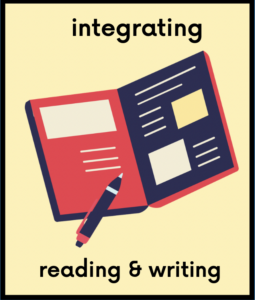
(See student centered video on critical reading and improving thinking skills)
Introduction
Good reading skills are a central element in solid writing, especially when research is involved. This ALP class (ENA 101) allows students to strengthen critical reading skills and improve writing by allowing for more time on task and full explication. There are different ways of reading. If we are reading for fun, we probably won’t read critically. But afterwards, when we decide we liked or didn’t like the text and explain why to someone else, we begin making judgments and reading critically.
In order to write a research paper or critical essay, short or long in any major, one must be able to read (both closely and by skimming), analyze, and engage with the readings, and use them as evidence for our points. Critical inquiry means moving beyond the surface or literal meanings of different kinds of texts and inferring both what the writer is saying and how that can affect the paper’s argument. These are different things. One may have to assess the quality and reasoning of the reading or source. This process of judging is called critical thinking generally and critical reading in particular. One of the fundamental goals of a college education is to become this kind of critical reader and critical thinker and be able to express those thoughts in clear writing of academic quality.
Critical readers:
- do not read solely for information or facts
- do read to expand their thoughts about the subject, to assess the text’s major assumptions and assertions, and to evaluate its supporting evidence
As instructors, we can not assume that our students are proficient and engaged readers.
We want to help students develop these critical abilities and modeling them in the classroom can be a good way to do so. To critically engage a text one asks questions of it that helps determine its audience, voice, context, and purpose. Some questions a critical reader asks might include:
- What are the basic facts (context) surrounding the reading such as: The author, title, year of publication and venue/place of publication? Social media/facebook or a vetted publication? These details matter to critical readers
- Who/where is the audience? How does it affect the writer’s expression of ideas?
- What is the piece’s genre? That is, is it fiction or journalism, drama, poetry, a research article? Is it structured as a narrative, exposition or explanation, or an argument for or against a debatable point? If there is a narrator, what is that character’s relation to the author?
- Once we are looking at the content, one should ask:
a. What is the general topic of this reading?
b. What is the thesis?
c. Where is the support, evidence, or development of that thesis (if it is an argument or explanation)?
d. What is the purpose (what does the author want one to know or to think about in a new and different way)? Does the author suggest a course of action or further research?
e. What kinds of literary techniques, language, tone or style is used to get this across? Does it evoke any particular response?
- What is your response to the author’s argument?
- What/where is the most significant information or argument (main idea) in the passage?
- How do we assess the writing’s overall quality as evidence for our own papers?
- How do we then use the information effectively in our paper, if we are writing one? (E.g., critically selecting the data and quotations relevant to our own thesis)




Leave a Reply